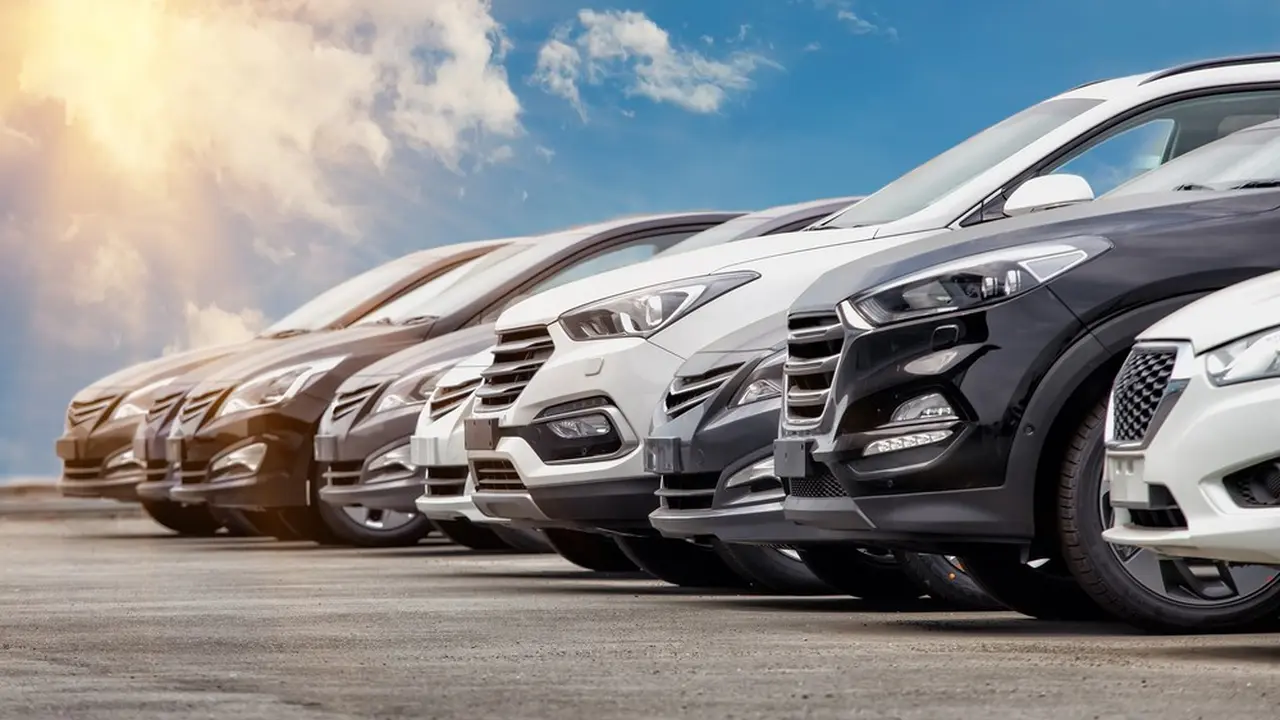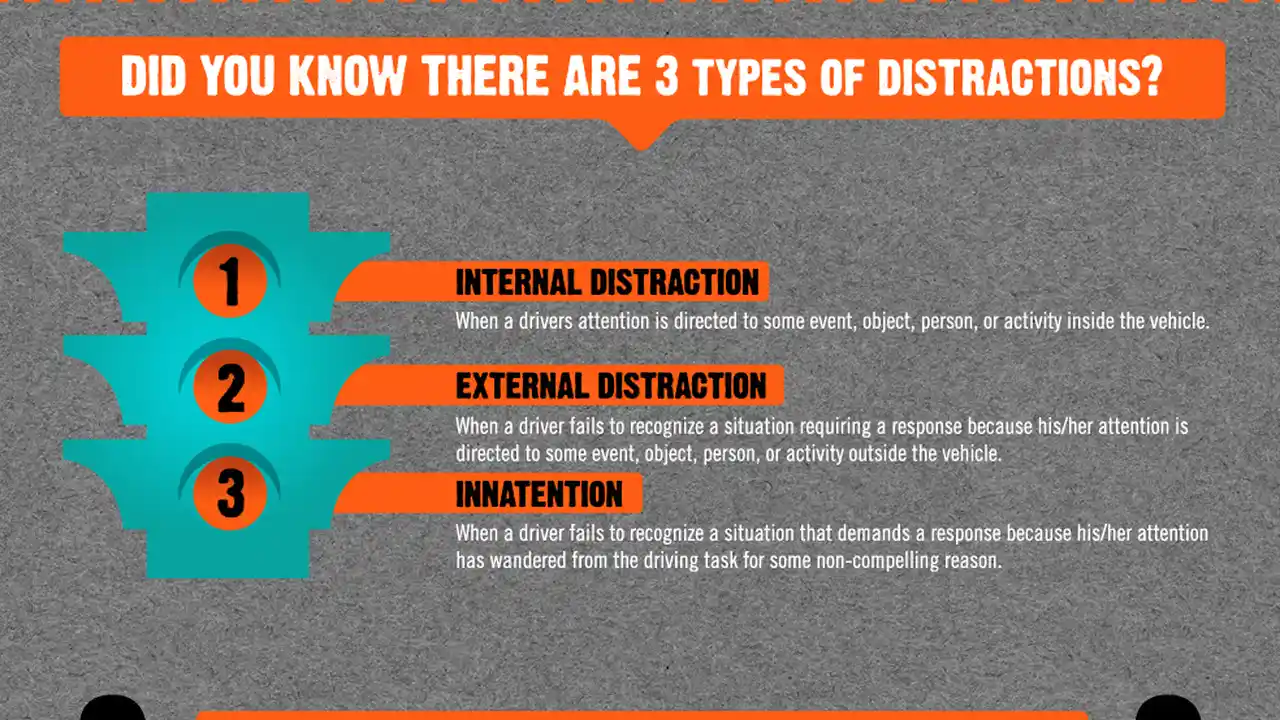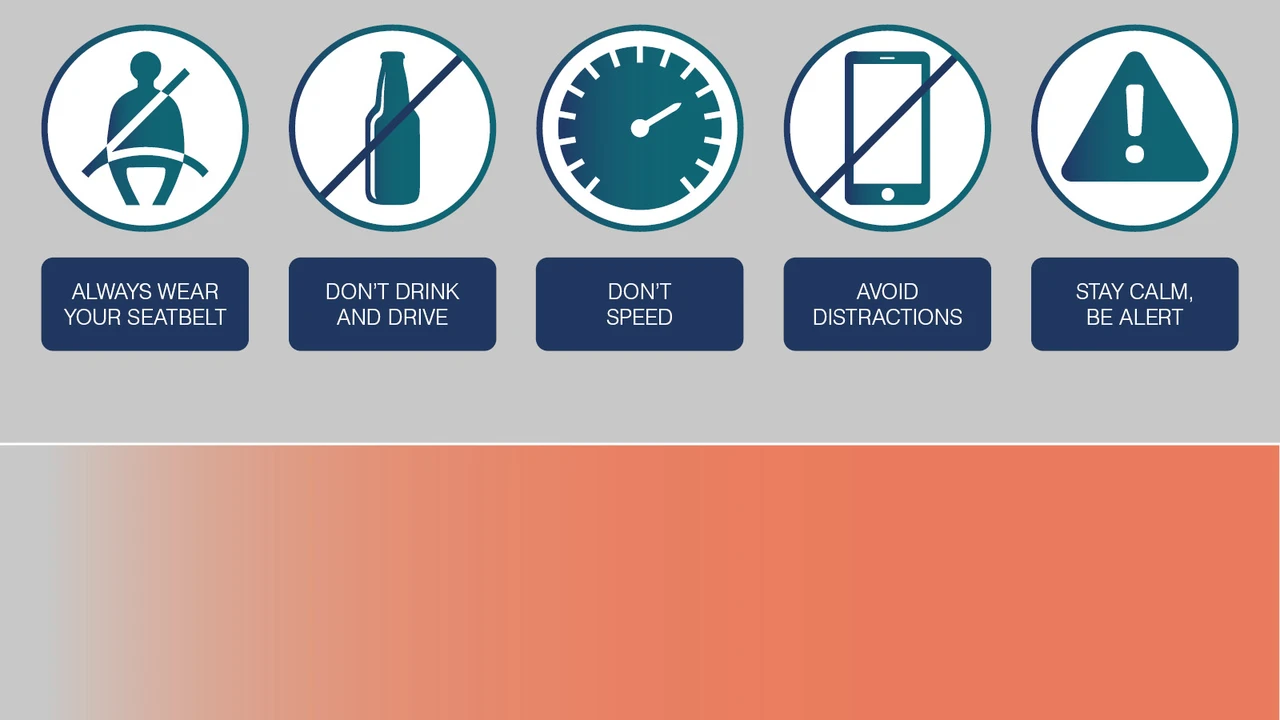How to Get Car Insurance Discounts for Safety Features
Sample meta description.

Understanding Car Insurance Discounts for Safety Features
Alright, let's talk about saving some serious cash on your car insurance. We all know car insurance can be a pain in the wallet, but did you know that your car's awesome safety features could be your ticket to lower premiums? Yeah, you heard that right! Insurance companies love safety, and they're willing to reward you for driving a safer vehicle. Think of it as a thank you for being responsible and less likely to cause an accident. Makes sense, doesn't it?
So, what exactly are we talking about? We're diving into the world of car insurance discounts specifically tied to the safety features your car has. These aren't just the standard airbags; we're talking about advanced technologies designed to prevent accidents in the first place. From automatic emergency braking to lane departure warnings, there's a whole arsenal of gadgets that can save you money.
Why do insurance companies offer these discounts? Simple: safer cars mean fewer accidents, fewer injuries, and fewer payouts for the insurance company. It's a win-win! They get to reduce their risk, and you get to save money on your insurance bill. It's like getting a pat on the back (and a discount!) for being a smart and safe driver.
Key Car Safety Features That Qualify for Insurance Discounts
Okay, let's get down to the nitty-gritty. What specific safety features are we talking about? Here's a rundown of some of the most common and effective features that can score you a discount:
Automatic Emergency Braking (AEB) Insurance Discount Eligibility
This is a big one! Automatic Emergency Braking (AEB) uses sensors to detect potential collisions and automatically applies the brakes if you don't react in time. It's like having a co-pilot who's always watching out for you. Many insurance companies offer substantial discounts for vehicles equipped with AEB because it significantly reduces the risk of rear-end collisions. This system is a lifesaver, literally and figuratively. Check your car's manual to see if you have it!
Lane Departure Warning Systems (LDWS) and Lane Keeping Assist (LKA) Insurance Discount Opportunities
Drifting out of your lane can be a recipe for disaster, especially on long drives. Lane Departure Warning Systems (LDWS) alert you when you're unintentionally drifting out of your lane. Lane Keeping Assist (LKA) takes it a step further by gently steering you back into your lane. These systems are especially helpful on highways and can prevent accidents caused by distracted driving or fatigue. Insurance companies see these features as valuable assets and often offer discounts as a result.
Blind Spot Monitoring (BSM) Insurance Discount Programs
We've all been there: trying to change lanes and almost hitting a car in our blind spot. Blind Spot Monitoring (BSM) uses sensors to detect vehicles in your blind spots and alerts you with a visual or audible warning. This is a great feature for preventing side collisions, especially in heavy traffic. Many insurance companies recognize the value of BSM and offer discounts to drivers who have it.
Adaptive Cruise Control (ACC) Insurance Savings Potential
Adaptive Cruise Control (ACC) is like cruise control on steroids. It not only maintains a set speed but also automatically adjusts your speed to maintain a safe following distance from the car in front of you. This is particularly useful in stop-and-go traffic and can help prevent rear-end collisions. While the discount might not be as significant as AEB, ACC is still a valuable safety feature that can contribute to lower insurance premiums.
Anti-Lock Braking System (ABS) and Electronic Stability Control (ESC)
These are older features, but still important! Anti-Lock Braking System (ABS) prevents your wheels from locking up during hard braking, allowing you to maintain steering control. Electronic Stability Control (ESC) helps prevent skidding by automatically applying brakes to individual wheels. These features are now standard on most vehicles, but they're still worth mentioning because they contribute to overall vehicle safety and can sometimes qualify you for a small discount.
How to Find Out If Your Car Has These Safety Features
So, how do you know if your car has these awesome safety features? Here are a few ways to find out:
- Check Your Owner's Manual: This is the first place to look. Your owner's manual will list all the features that came standard on your vehicle, as well as any optional features that were added.
- Review the Vehicle's Window Sticker (Monroney Label): If you still have the window sticker from when you bought the car, it will list all the features and options.
- Use Your Car's VIN: You can use your car's Vehicle Identification Number (VIN) to look up its specifications online. There are several websites that offer VIN lookup services.
- Contact Your Car Dealership: Your local car dealership can also help you determine what safety features your car has.
Shopping for Cars with Advanced Safety Features
Thinking about buying a new car? Prioritize safety features! Here's what to consider:
Research Car Safety Ratings
The Insurance Institute for Highway Safety (IIHS) and the National Highway Traffic Safety Administration (NHTSA) are two organizations that conduct crash tests and rate the safety of vehicles. Check their websites to see how different cars perform in these tests. Look for vehicles with "Top Safety Pick+" awards from IIHS and 5-star ratings from NHTSA. These ratings can provide valuable insights into the overall safety of a vehicle.
Consider Specific Safety Feature Packages
Many car manufacturers offer safety feature packages that bundle together several advanced safety technologies. These packages can be a great way to get a comprehensive suite of safety features at a reasonable price. Be sure to compare different packages and see which one best suits your needs and budget.
Test Drive and Familiarize Yourself with the Features
Before you buy a car, take it for a test drive and familiarize yourself with all the safety features. Make sure you understand how they work and how to use them properly. Ask the salesperson to demonstrate the features and answer any questions you have. The more comfortable you are with the safety features, the more likely you are to use them effectively.
How to Claim Your Car Insurance Discounts
Alright, you've got a car loaded with safety features. Now, how do you actually get the discounts? Here's the step-by-step guide:
Contact Your Insurance Company
The first step is to contact your insurance company and let them know about the safety features on your car. They may have a specific form you need to fill out or a process you need to follow. Be prepared to provide documentation, such as your owner's manual or window sticker, to verify the presence of the safety features.
Provide Documentation of Safety Features
As mentioned above, you'll likely need to provide documentation to prove that your car has the safety features you're claiming. This could include your owner's manual, window sticker, or a vehicle specification sheet. Make sure you have these documents readily available when you contact your insurance company.
Ask About All Available Discounts
Don't just ask about discounts for safety features. Ask your insurance company about all the discounts they offer. You may be eligible for discounts based on your driving record, age, occupation, or other factors. It never hurts to ask! You might be surprised at how much you can save.
Compare Quotes from Different Insurance Companies
Even if you're happy with your current insurance company, it's always a good idea to compare quotes from other companies. Different insurance companies offer different discounts and rates, so you might be able to find a better deal elsewhere. Shop around and see who offers the best coverage at the lowest price.
Specific Product Recommendations and Comparisons
Let's get into some specific product recommendations. Keep in mind that pricing can vary, so these are estimates.
Dashboard Cameras (Dash Cams) for Accident Documentation and Potential Insurance Discounts
While not always a direct discount, a dash cam provides evidence in case of an accident. Some insurers offer discounts for having one. They range from $50 to $300. Examples:
- Vantrue N4: A high-end dash cam with front, rear, and interior recording. Great for Uber/Lyft drivers. Price: ~$250
- Garmin Dash Cam 67W: A reliable and easy-to-use dash cam with a wide field of view. Price: ~$200
- Rexing V1 Basic: A budget-friendly option that still provides good quality video. Price: ~$70
Backup Cameras: Enhancing Safety and Potentially Lowering Insurance Premiums
Many newer cars have backup cameras, but you can add one to older vehicles. These help prevent backing accidents. Some insurers might offer a small discount. Aftermarket backup cameras range from $50 to $200. Examples:
- Auto-Vox CS-2: A wireless backup camera with a clear image and easy installation. Price: ~$130
- eRapta Backup Camera: A highly rated and affordable wired backup camera. Price: ~$35
Aftermarket Blind Spot Monitoring Systems: Retrofitting Safety for Older Vehicles
If your car doesn't have blind spot monitoring, you can install an aftermarket system. These can significantly improve safety. While discounts are less common, the added safety is worth it. These systems range from $150 to $500, including installation. Examples:
- Brandmotion Blind Spot Monitoring System: A high-quality system with accurate detection. Price: ~$400 (plus installation)
- GOSHERS Blind Spot Detection System: A more affordable option that still provides reliable blind spot monitoring. Price: ~$180 (plus installation)
Comparing Different Safety Features: Which Ones Offer the Best Value?
Let's break down which safety features offer the best bang for your buck in terms of insurance discounts and overall safety.
AEB vs. LDWS: Which Offers More Insurance Savings?
Generally, Automatic Emergency Braking (AEB) offers a larger discount than Lane Departure Warning Systems (LDWS). AEB is considered a more impactful safety feature because it directly prevents collisions. LDWS is more of a warning system, so the discount is usually smaller. However, having both is ideal!
BSM vs. Backup Cameras: A Comparison of Rear and Side Safety
Blind Spot Monitoring (BSM) is generally considered more comprehensive than a backup camera because it covers a wider range of potential hazards. BSM monitors your blind spots while you're driving, while a backup camera only helps when you're backing up. BSM might yield a slightly better discount, but both are valuable.
The Importance of Regular Maintenance for Safety Features
Don't forget that even the best safety features require regular maintenance to function properly. Make sure you keep your car's sensors clean and calibrated. Have your car serviced regularly to ensure that all the safety features are working as intended. A malfunctioning safety feature is worse than no safety feature at all because it can give you a false sense of security.
Real-World Examples and Scenarios
Let's look at some real-world examples of how safety features can save you money and prevent accidents.
Scenario 1: The Near Miss on the Highway
Imagine you're driving on the highway, and you're momentarily distracted. You start to drift out of your lane. Thanks to your Lane Departure Warning System, you receive an audible alert, and your Lane Keeping Assist gently steers you back into your lane. You avoid a potentially dangerous situation, and your insurance company is happy that you have this safety feature.
Scenario 2: The Stop-and-Go Traffic
You're stuck in stop-and-go traffic, and the car in front of you suddenly slams on its brakes. Your Adaptive Cruise Control automatically slows down your car to maintain a safe following distance, preventing a rear-end collision. You avoid an accident, and your insurance rates stay low.
Scenario 3: The Parking Lot Mishap
You're backing out of a parking space, and you don't see a pedestrian walking behind your car. Your backup camera provides a clear view of the area behind you, allowing you to stop in time and avoid hitting the pedestrian. A potential tragedy averted, thanks to a simple safety feature.
Future Trends in Car Safety and Insurance Discounts
What does the future hold for car safety and insurance discounts? Here are some trends to watch out for:
Increased Adoption of Advanced Driver-Assistance Systems (ADAS)
Advanced Driver-Assistance Systems (ADAS) are becoming increasingly common in new vehicles. These systems include features like automatic emergency braking, lane keeping assist, and adaptive cruise control. As ADAS becomes more widespread, insurance companies will likely offer even greater discounts for vehicles equipped with these technologies.
The Rise of Autonomous Driving
Autonomous driving is still in its early stages, but it has the potential to revolutionize car safety. Fully autonomous vehicles could eliminate many of the accidents caused by human error. As autonomous technology advances, insurance companies will need to adapt their pricing models to reflect the reduced risk.
Data-Driven Insurance Pricing
Insurance companies are increasingly using data to personalize insurance pricing. They may track your driving habits, such as your speed, braking patterns, and mileage, to assess your risk and determine your premiums. This means that safe drivers could be rewarded with lower insurance rates, while risky drivers could face higher premiums.
Final Thoughts: Safe Driving is the Best Investment
Ultimately, the best way to save money on car insurance is to be a safe driver. While safety features can help, they're not a substitute for responsible driving habits. Pay attention to the road, avoid distractions, and follow traffic laws. Not only will you save money on insurance, but you'll also protect yourself and others from harm. Drive safe out there!
:max_bytes(150000):strip_icc()/277019-baked-pork-chops-with-cream-of-mushroom-soup-DDMFS-beauty-4x3-BG-7505-5762b731cf30447d9cbbbbbf387beafa.jpg)






